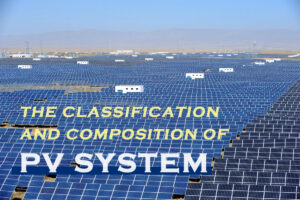Solar Energy Storage Systems
Classification of solar energy storage systems depends on several factors. There are two primary categories: DC coupled and AC coupled configurations. DC coupled configurations are more commonly used for PV+S installations. In addition to the basic characteristics, energy storage systems can be classified according to their energy storage capacity, heat transfer capacity, and automation and control options.
Both PV and storage systems are connected to the electrical grid. In a DC coupled configuration, solar energy is fed into the PV system and then stored in the storage. The storage is charged by the PV system and then converted back to DC by the inverter. When it is necessary to shift the energy from off-peak periods to on-peak periods, the BESS can charge from PV energy.
In a grid-connected solar energy system, the storage helps the solar system contribute to the power supply when the sun is not shining. Without energy storage, grid operators may curtail some of the solar energy production to prevent over-generation and grid reliability issues. Using energy storage allows solar to be more seamlessly integrated into the energy landscape.
When it comes to solar energy storage system, there are many different types available. In order to determine which type of system is best for your specific needs, you can consult a solar energy storage system expert. A solar energy storage system can be grid-tied, grid-hybrid, or off-grid. Each type of system has distinct advantages and disadvantages.

Classification of Solar Energy Storage Systems
One of the most common uses of energy storage is meeting peak demand. Typically, electricity demand increases during peak times, such as during the night. As a result, the price of electricity rises, causing power plants to ramp up their production. Energy storage systems enable the grid to be more flexible, allowing distribution companies to purchase electricity during off-peak hours and sell it to the grid when there is a greater demand.
Currently, electricity storage technologies include rechargeable batteries and ice storage tanks. Hydroelectric dams are the primary source of bulk energy storage, and they can be either pumped or conventional. Grid energy storage, on the other hand, is a collection of large-scale energy storage methods.
Another type of energy storage is thermal energy storage, which uses liquids or solid materials to store heat. The heat can be used to boil water or run a flywheel, which produces electricity at peak demand. Another system is pumped hydro, which uses water pumped uphill to a reservoir and turns turbines. Compressed air can also be stored in underground formations and released when demand is high.
A new approach to assessing the value of energy storage is known as market potential. This method builds on existing system-value literature to identify the value of storage in an environment of complex competition. This new approach also focuses on optimising the quantity of storage units. This is useful for both research and industry.